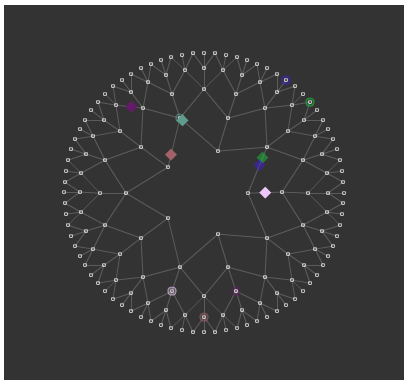Half A Chance At A Centre-Left Coalition
It’s a ridiculous time for speculation, given that the one poll that really matters is actively underway, but I’m going to speculate anyway. I’ve got four ifs and a hopeful then.
- If Harper doesn’t get a majority.
- If the NDP comes in number two.
- If the NDP and the Liberals have more seats together than the Conservatives, without the help of the Bloc.
- If the NDP calculate that the public opinion cost of spearheading a coalition wouldn’t be too high.
- Then we could have an NDP-led centre-left coalition within weeks.
I’d assign about 2/3rds likelihood to the #1 if. The best two polling aggregation and modelling sites are both projecting 143 seats for the Cons, 12 short of a clear majority. Polling and modelling sometimes gets it wrong, but not usually very wrong right before an election. Especially if multiple models are coalescing on the same projection.
#2 if is probably 2/3rds likely as well. Even the more cautious threehundredandeight.com is projecting the NDPs in a strong second place. Given that the numbers were getting higher right up until the last poll left the field, that could mean that the final results could look even better.
#3 is hard to tell, but let’s say 1/2 chance. tooclosetocall.com says yes, threehundredandeight.com says no.
#4 is probably 3/4s likely. The Liberals made a choice to underwrite Harper’s very effective framing of coalitions as back-room deals to elect second place leaders. They probably had to. But the NDP never bought that message, and they’re better placed to lead the charge on re-framing. And if they do form a relatively stable two-party sans-Bloc coalition, it would likely give them a full four years to prove to the suspicious Anglo masses that coalitions are a boring, practical arrangement.
I’m not sure how to boil those probabilities into a single mathematical likelihood, because they’re all correlated with each other. But generally I’d say we’ve got a one out of two chance of a wonderful outcome here.
The alternative could be terrible. Who says Canadian politics are boring? OK, nobody lately.
Also worth noting: the first major act of a re-elected Conservative party is presumably to re-introduce the same budget that partially triggered the last dissolution. If a coalition is to be formed, that will be an obvious moment for it. If it happens, it could happen in a matter of weeks. Another wildcard: even if a coalition meant a second-place Liberal party very publically going back on their word and allying themselves with the nasty Bloc, they might still go for it. I’m not sure it would be stable or play well in the inevitable next election, but it would be hard to resist.
Oh boy.

